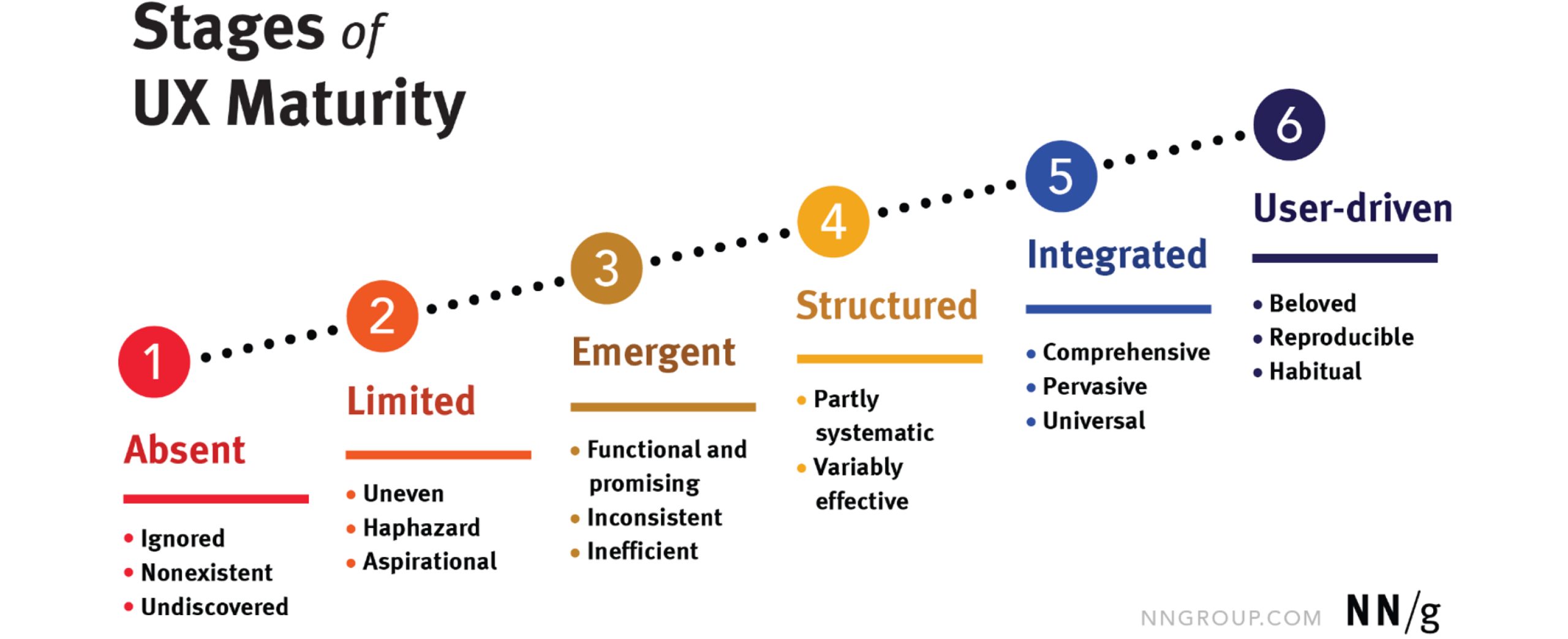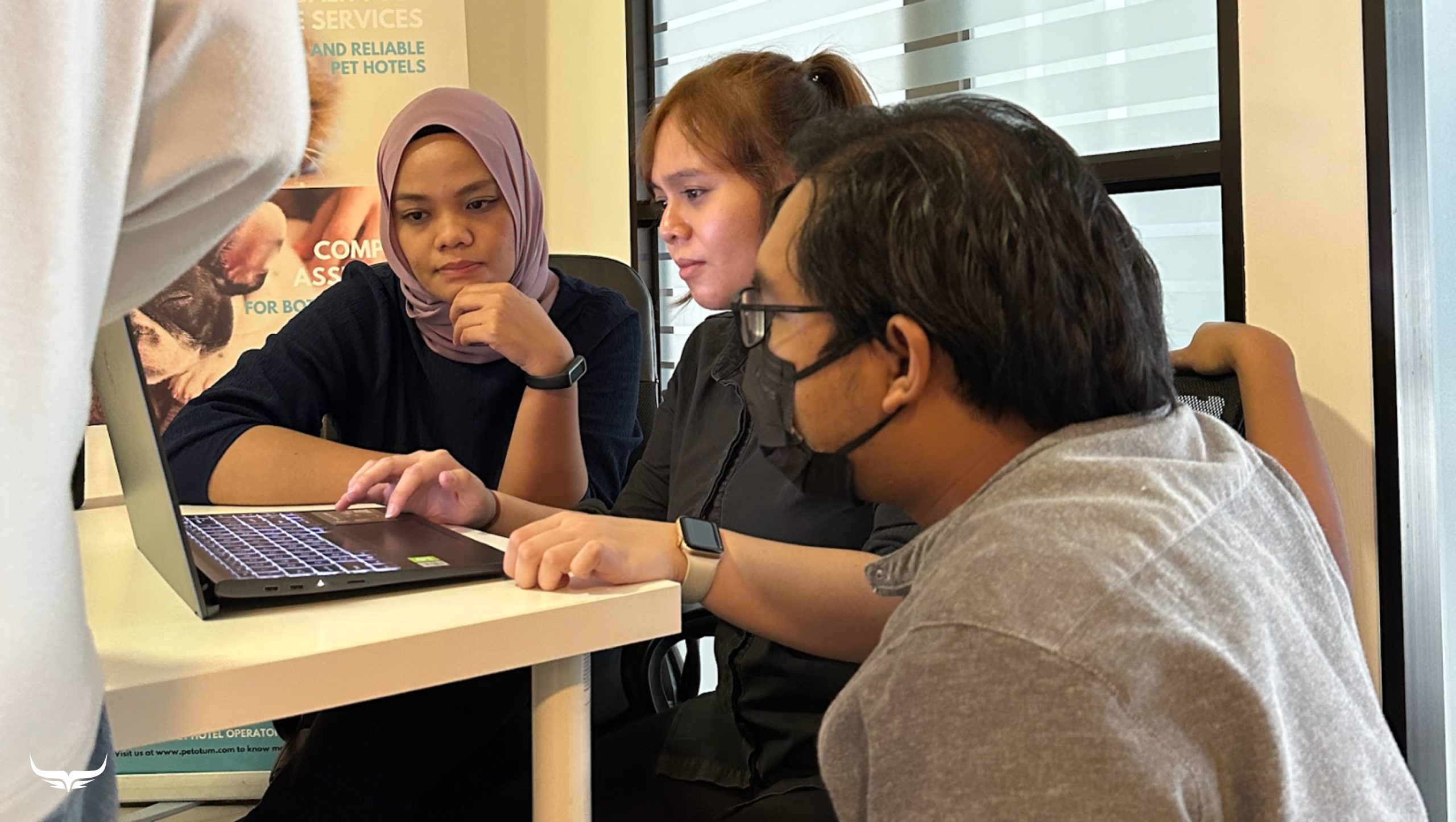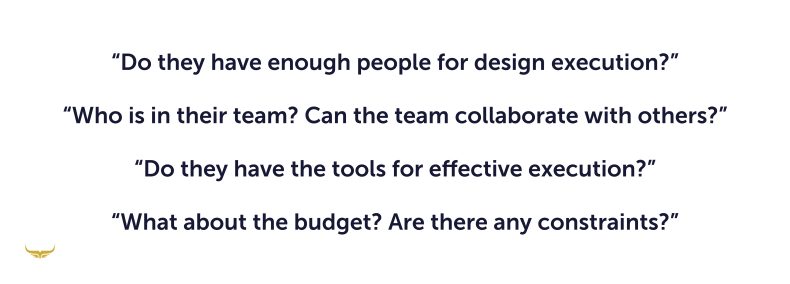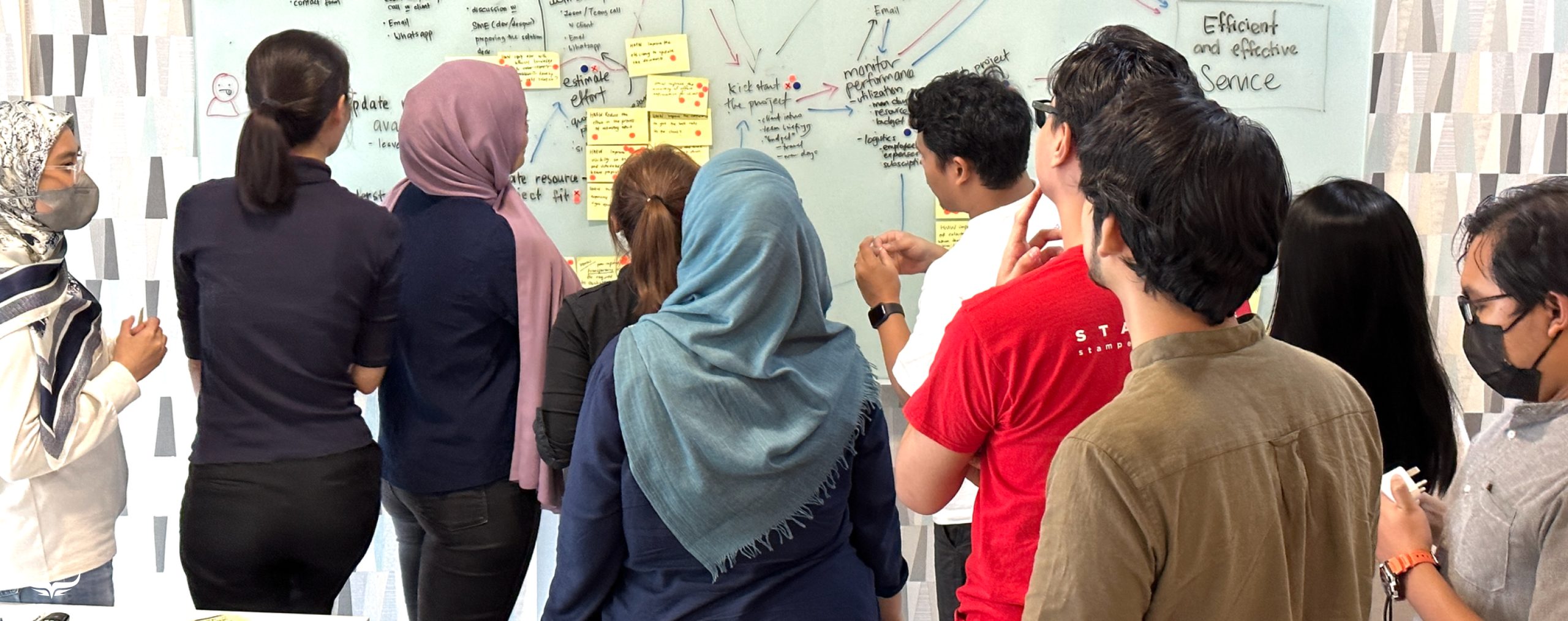What is design maturity, and how can it drive meaningful innovation and growth?
This was the big question I asked myself in mind before writing this blog.
I came across several articles and they explained what design maturity is comprehensively. Some share a structured model, and some view it as a progressive scale. One thing I found in common is design maturity is the level of sophistication and effectiveness of design processes, methods, and outcomes within an organisation. Scaling it is the key to unlocking a more intuitive, engaging user experience that drives retention and growth.
When I first delved into the topic, I was inspired by the Nielsen Norman Group’s article explaining the 6 levels of UX maturity model. Those 6 levels are:

Nielsen Norman Group’s UX Maturity Model:
🤔 Absent:
Little to no UX
🚧 Limited:
UX work is rare, done haphazardly, and lacking importance.
🔥 Emergent:
The UX work is functional and promising but done inconsistently and inefficiently.
🎯 Structured:
The organisation has a semisystematic UX-related methodology that is widespread but with varying degrees of effectiveness and efficiency.
🧩 Integrated:
UX work is comprehensive, effective, and pervasive.
🚀 User-driven:
Dedication to UX at all levels leads to deep insights and exceptional user-centered– design outcomes.
Source: The 6 Levels of UX Maturity
🌝 Why am I thinking about design maturity?
During my tenure at Stampede Design, I’ve worked with multiple companies from various industries and observed significant differences in how my team approached problem-solving using design. This variability sparked a series of questions: “Why are we not always using the same approaches? Why do they differ? Is it because of the different industries?”
I turned to my UX lead, Hidayu Hakim, for insights. She responded with a thought-provoking question, “Do you think that if we go straight into deep research for a company that has never done UX and emphasizes execution, we will get the right insights about our users and the business?” This question made me reflect deeply.
After conducting my own research, I found that it really depends on the design maturity of a company. A more mature design practice shapes the way we approach problem-solving, leading to more effective and impactful solutions.
Why does our approach depend on the organisation’s maturity level?
Not every organisation has a strategic approach to design. Some need assurance because it is their first time using design-led problem-solving. Others have high awareness and do not need any introduction. Some have awareness but require reassurance due to the risks they are taking. This is where designers come in to understand their readiness and pivot our approaches accordingly.

🤔 Determine their readiness
So, how do we determine their readiness? The first thing you need to find out is the resources.

As a product designer, these are the first considerations I look into. Understanding the client’s resource constraints helps in managing risks associated with scaling design maturity. It prevents scenarios where the team commits to high-cost initiatives without having the right support, potentially leading to failures and financial strain. Accurate knowledge of the resources allows for more effective long-term planning and setting realistic goals and timelines for elevating design maturity.
You can’t improve what you don’t measure.” – Peter Drucker
Measuring the readiness and maturity of design practices helps in setting clear benchmarks and goals.
💡 Be more intentional, start small
Based on my experience, we often start by implementing small, visible improvements to demonstrate the immediate benefits of design thinking, especially for organisations new to UX design. Establish basic design guidelines and templates, such as brand guidelines for products to follow. Documentation is key. Start documenting design principles for reference during execution. This approach helps gain allies as they begin to see the value of small, incremental design processes in achieving bigger outcomes.
For example, at one of our client engagements, we began by creating a simple yet comprehensive design system. This not only streamlined the design process but also improved cross-team collaboration and consistency in the product’s user experience. Within a few months, we saw significant improvements in design efficiency and product quality.
In more established organisations, starting with usability testing to gather user feedback can drive improvements in product usability, increasing engagement and contributing to business success. This initial touchpoint with users can provide invaluable insights.
🧩 Strategically integrate design into business
In more mature organisations, leveraging sophisticated tools and experienced designers leads to innovative and effective solutions. Integrating design into strategic business decision-making allows design teams to influence product and service strategies from the outset, aligning solutions with user needs and business objectives.
When this integration becomes the norm, design processes become more comprehensive and methodological, including user research, iterative product testing, and validation stages. This maturity enhances problem-solving effectiveness.
Design is not just what it looks like and feels like. Design is how it works.” – Steve Jobs
Strategic integration of design into business ensures that design solutions are not only aesthetically pleasing but also functional and aligned with business goals.
🤝🏼 Collaborate!
Collaboration with other disciplines enriches solutions with diverse perspectives, enhancing the quality and creativity of the output. Effective collaboration accelerates problem-solving and ensures a cohesive user experience across different platforms and touchpoints, building a strong, reliable brand.
At Stampede, we’ve seen the power of interdisciplinary collaboration firsthand. By bringing together designers, developers, and business analysts, we create solutions that are not only innovative but also practical and aligned with business objectives. For instance, in a recent project with a healthcare client, our collaborative approach helped us develop a user-friendly app that significantly improved patient engagement and satisfaction.

🔍 Detect potential risks
More mature design practices allow for earlier detection of potential risks, enabling timely pivots before costs escalate. Designers are naturally cost-efficient and should react swiftly to any potential risks to cost or effort. Maturity allows for a balance between cost-efficiency and innovation, encouraging experimentation and adaptability in design processes.
For example, during the development of a financial app, our team identified potential security risks early in the design phase. By addressing these risks proactively, we not only ensured the app’s security but also saved significant costs that would have arisen from late-stage fixes.
🚀 Innovate scalably and sustainably
Mature companies excel at developing solutions that are effective in the short term and scalable and sustainable in the long term. Their strategic approach ensures that design solutions continue to deliver value as the company and market evolve. At Stampede, our leaders, Shaza Hakim and Hidayu Hakim, exemplify strategic innovation and drive in this area.
For instance, in a recent project with a retail client, our scalable design solutions enabled the company to quickly adapt to changing market conditions, resulting in increased customer satisfaction and revenue growth. By focusing on sustainability, we also ensured that our designs could evolve with the client’s needs over time.
Innovation is the ability to see change as an opportunity, not a threat.” – Steve Jobs
Embracing scalable and sustainable design practices allows organizations to turn challenges into opportunities for growth and innovation.
🖖🏽 Moving forward
As we continue to explore and expand the boundaries of design maturity, our goal at Stampede is not just to adapt to innovations but to drive them. We are excited about the future possibilities and are committed to sharing our journey and insights with the broader community.
We welcome discussions with those interested in elevating their design practices. Reach out to me through my LinkedIn or my team at Stampede Design with your experiences or questions about advancing design maturity in your own fields!
